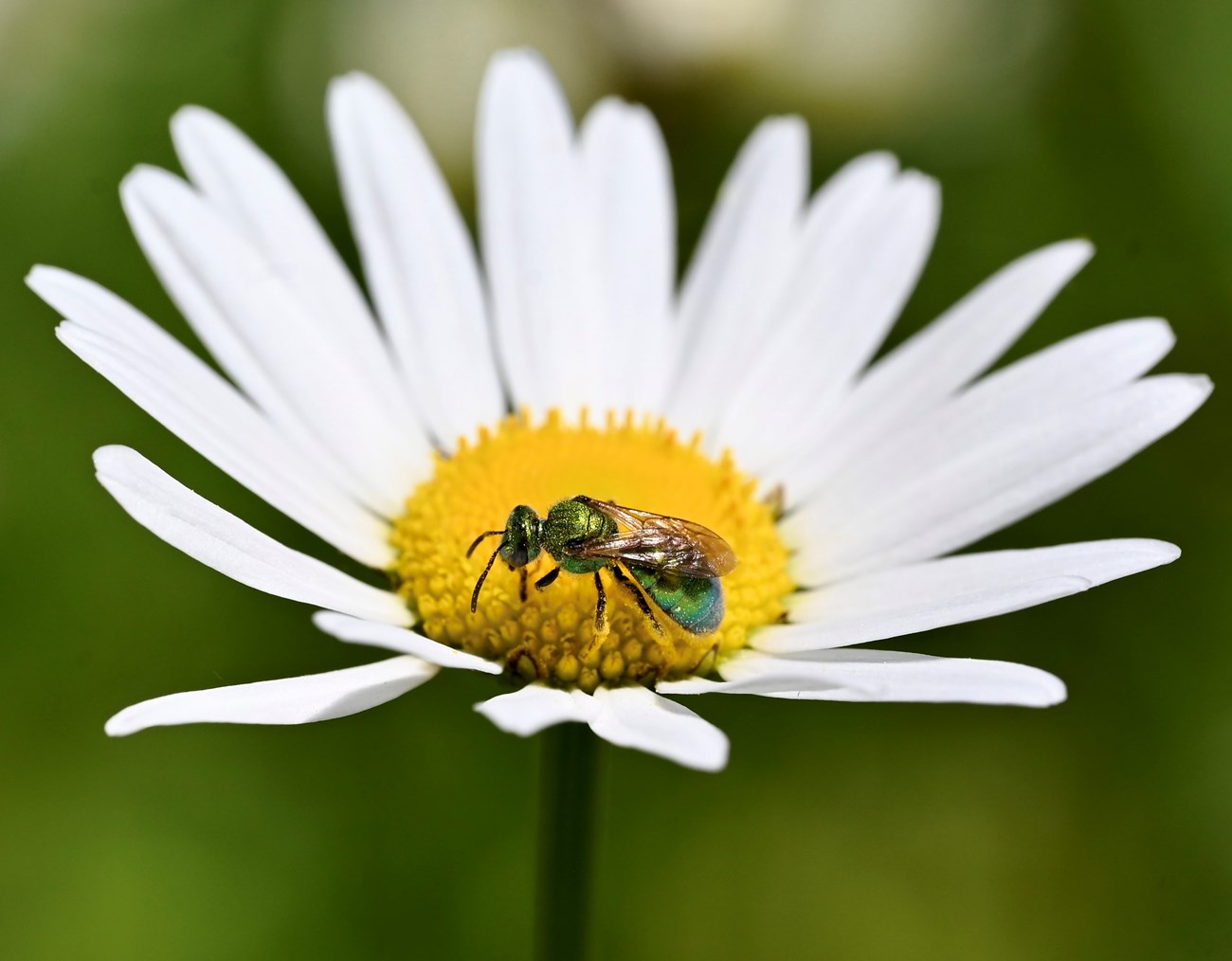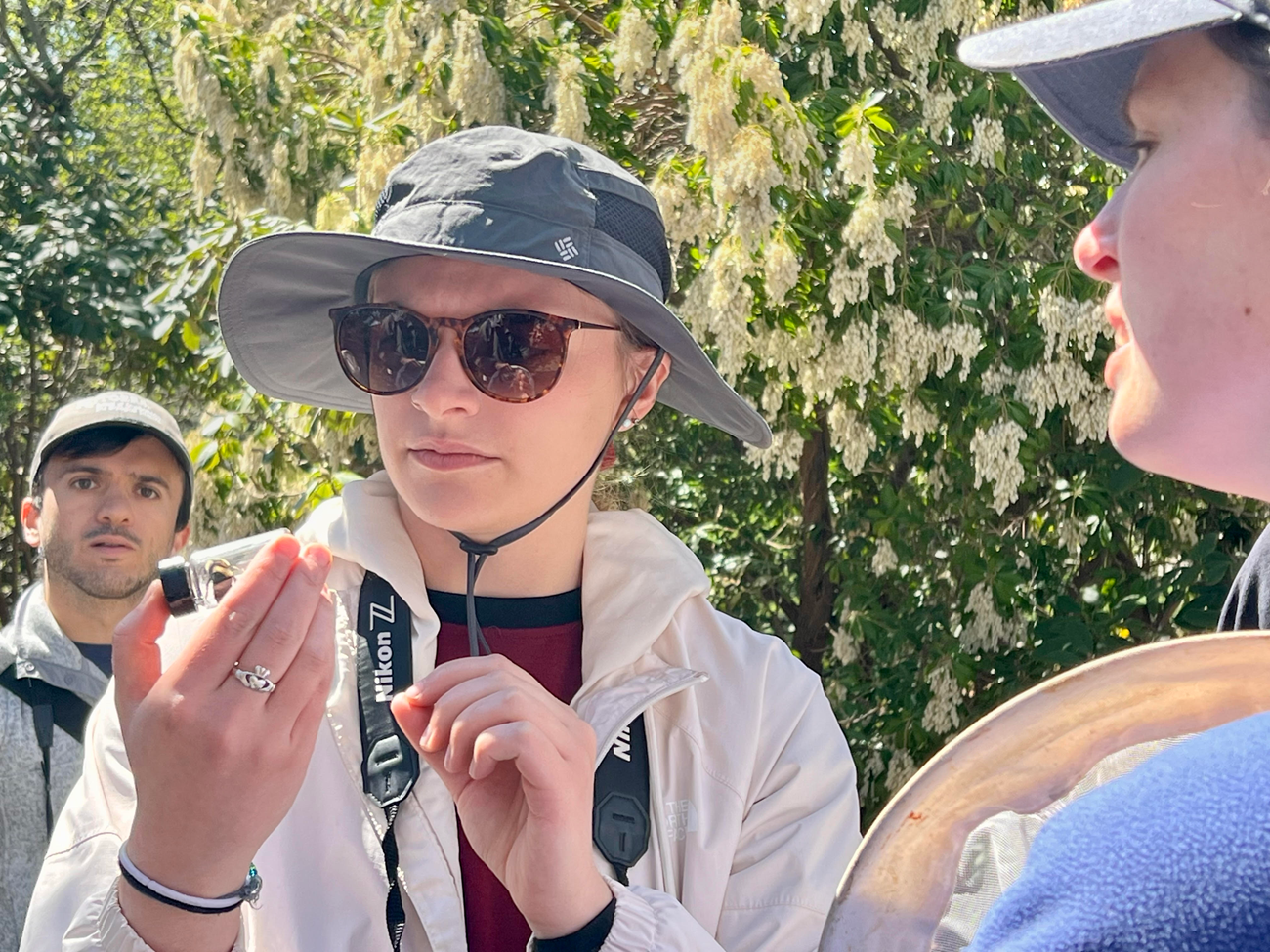Last updated: April 8, 2025
Article
A New Way to Study Bees

NPS / Christina Martin
The National Park Service (NPS) is on a mission to deepen its understanding of the bees living in parks. Traditional survey methods require significant time, specialized expertise, and the collection of specimens from their natural habitats for species-level identification. With limited bee specialists available and a growing need for efficient, cost-effective methods, the NPS sought an alternative approach.
The NPS Inventory and Monitoring Division took on this challenge. They assembled a team of researchers and bee experts to develop new bee inventory methods at Minute Man National Historical Park (NHP). As a small yet ecologically significant site, it provided an ideal testing ground for this future NPS-wide initiative.
But how can this research continue with so few bee experts? The answer: engage non-experts. However, this presented another challenge—how do you train individuals with no prior experience to identify bees when there are so many species? Massachusetts alone is home to nearly 400 species, and across the U.S., there are about 4,000. To simplify the process, the team’s bee specialists grouped local species into categories that non-experts could learn to recognize. Instead of identifying every species, they focused on key traits such as color, size, and shape.
The team created 9 main categories and 41 subcategories to encompass the bee species found at Minute Man NHP throughout the spring, summer, and fall. While these categories do not always provide species-level identification, they still offer valuable insights into the diversity of bees in the park.
Once training was complete, it was time to put the non-experts’ skills to the test. Equipped with insect nets, vials, cameras, and datasheets, they surveyed bees across the park. Conducting surveys weekly or biweekly, they recorded which bees were present, their locations, and the flowers they visited. Their accuracy was periodically assessed using iNaturalist, a community science platform where users share and identify species observations.

NPS
